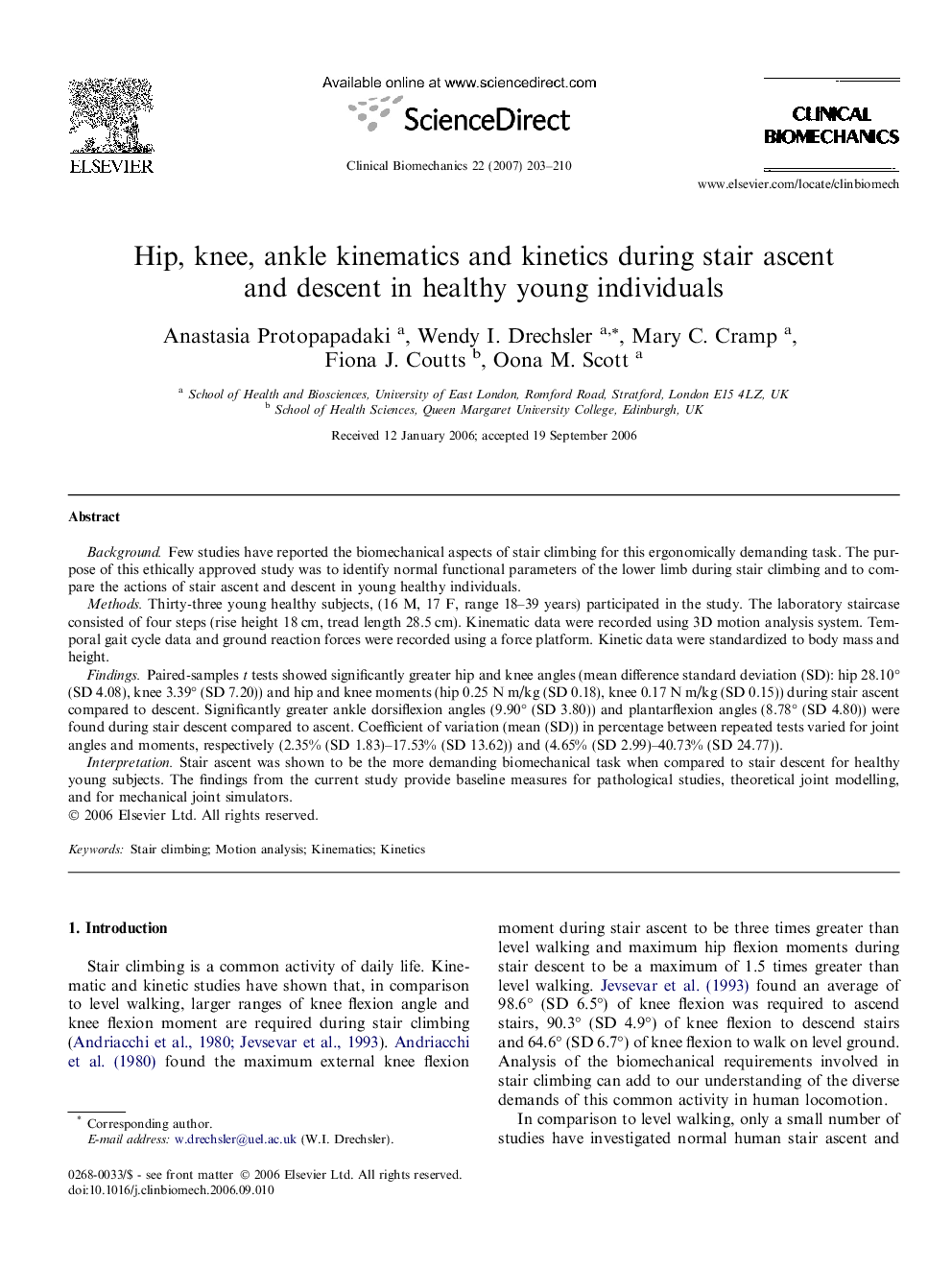| Article ID | Journal | Published Year | Pages | File Type |
|---|---|---|---|---|
| 4051318 | Clinical Biomechanics | 2007 | 8 Pages |
BackgroundFew studies have reported the biomechanical aspects of stair climbing for this ergonomically demanding task. The purpose of this ethically approved study was to identify normal functional parameters of the lower limb during stair climbing and to compare the actions of stair ascent and descent in young healthy individuals.MethodsThirty-three young healthy subjects, (16 M, 17 F, range 18–39 years) participated in the study. The laboratory staircase consisted of four steps (rise height 18 cm, tread length 28.5 cm). Kinematic data were recorded using 3D motion analysis system. Temporal gait cycle data and ground reaction forces were recorded using a force platform. Kinetic data were standardized to body mass and height.FindingsPaired-samples t tests showed significantly greater hip and knee angles (mean difference standard deviation (SD): hip 28.10° (SD 4.08), knee 3.39° (SD 7.20)) and hip and knee moments (hip 0.25 N m/kg (SD 0.18), knee 0.17 N m/kg (SD 0.15)) during stair ascent compared to descent. Significantly greater ankle dorsiflexion angles (9.90° (SD 3.80)) and plantarflexion angles (8.78° (SD 4.80)) were found during stair descent compared to ascent. Coefficient of variation (mean (SD)) in percentage between repeated tests varied for joint angles and moments, respectively (2.35% (SD 1.83)–17.53% (SD 13.62)) and (4.65% (SD 2.99)–40.73% (SD 24.77)).InterpretationStair ascent was shown to be the more demanding biomechanical task when compared to stair descent for healthy young subjects. The findings from the current study provide baseline measures for pathological studies, theoretical joint modelling, and for mechanical joint simulators.
